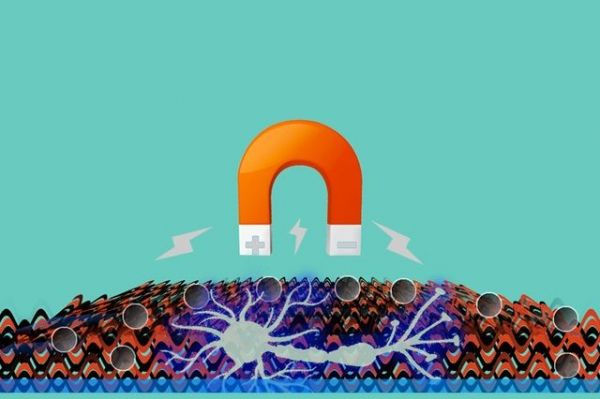UCLA bioengineers have demonstrated that a gel-like material containing tiny magnetic particles could be used to manage chronic pain from disease or injury. Broadly, the study demonstrates the promising use of biomechanical forces that push and pull on cells to treat disease.
“Much of mainstream modern medicine centers on using pharmaceuticals to make chemical or molecular changes inside the body to treat disease,” said Dino Di Carlo, UCLA professor of bioengineering and the principal investigator of the study. “However, recent breakthroughs in the control of forces at small scales have opened up a new treatment idea — using physical force to kick-start helpful changes inside cells. There’s a long way to go, but this early work shows this path toward so-called ‘mechanoceuticals’ is a promising one.”
The researchers used small magnetic particles inside a gel to control cell proteins that respond to mechanical stimulation, and which control the flow of certain ions. These proteins are on the cell’s membrane and play a role in the sensations of touch and pain. The study was published in Advanced Materials.
“Our results show that through exploiting ‘neural network homeostasis,’ which is the idea of returning a biological system to a stable state, it is possible to lessen the signals of pain through the nervous system,” said Andy Kah Ping Tay, a recent UCLA doctoral graduate who was the lead author of the study. “Ultimately, this could lead to new ways to provide therapeutic pain relief.”
Continue reading at UCLA.
Image via UCLA.


